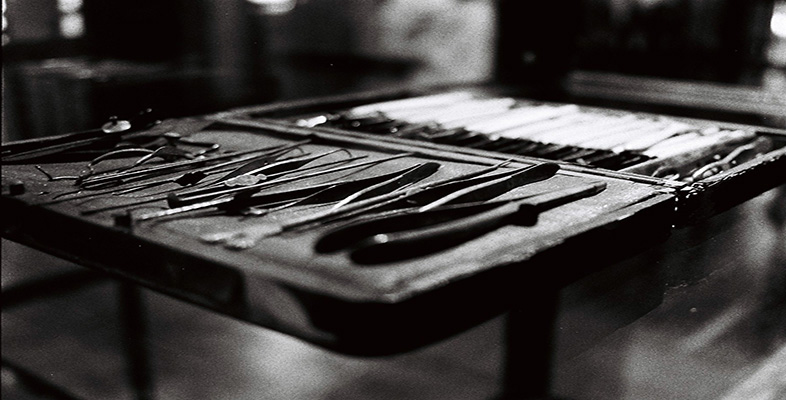5.4 Clinics and outpatient services
In addition to acquiring greater access to general practitioners in the late nineteenth and early twentieth centuries, poor patients also received more medical help from the outpatient departments of charitable hospitals and dispensaries. Hospital outpatient departments were an increasingly popular source of care: between 1860 and 1900, the number of patients attending the outpatient department of the London Hospital increased from 25,000 to 220,000. By 1910, there were 1.75 million attendances each year at outpatient and casualty departments across London, and provincial hospitals experienced similar levels of demand. Consequently, huge queues regularly built up, and patients had to wait for up to six hours to see a doctor. In an effort to reduce demand, some hospitals introduced a small charge for repeat consultations unless patients could prove they were unable to pay. Treatment was similar to that in a GP's surgery – a rapid examination and a routine prescription, although some patients were referred to specialist departments or admitted to the hospital as inpatients.
Charitable dispensaries, funded by wealthy donors, were an important source of care for working-class patients in the nineteenth century right across Europe–they were founded even in Russia, where there was no strong tradition of medical charity. At the end of the nineteenth century, the charitable institutions inspired the creation of provident dispensaries, which operated as a form of health insurance. In return for a small weekly subscription (one Northampton dispensary charged 1d for adults and 2d for families), members received basic medical treatment at the dispensary's premises. The work of these dispensaries has received little attention from historians. The York Dispensary is the subject of one of the few detailed studies, and, if it is typical, then dispensaries were lively institutions, responsive to a wide range of medical needs within the community. Founded in 1788, the York Dispensary quickly became an important source of medical care: in the 1880s, around 5,000 patients – roughly 10% of the city's population – called there each year. Attendance at the dispensary peaked in 1903–4, when 9,000 patients used it, but fell after the introduction of National Health Insurance. However, the numbers of women, children and the elderly – all uninsured under NHI – increased after 1913. As well as providing consultations with a general practitioner, the dispensary had a dental service, and an inpatient and outpatient maternity service. It also played a role in dealing with outbreaks of epidemic disease (Webb, 1988).
Around this time, other specialised dispensaries and clinics, dealing with specific diseases or particular groups of the population, opened their doors. Tuberculosis dispensaries were established by charities and local government as part of the campaign to control the disease. By 1938, there were 482 TB dispensaries in Britain, dealing with over 100,000 cases per year. In them, patients received physical examinations to check the condition of their lungs. They were given advice on diet and lifestyle to help combat the infection, and on how to avoid spreading the disease. Treatment was limited to cough mixtures and cod liver oil, which was supposed to strengthen the body and help increase weight. VD clinics providing free and confidential treatment to everyone were opened as a means of controlling the spread of infection. However, they were not attractive places – many clinics were poorly funded and rather forbidding. Clinics provided as part of the School Medical Service were more popular. Children in poorer families had little access to medical care, which their parents were unable to afford – unless a child was very ill, the parents were unlikely to call on the services of a GP. Not surprisingly, when local authorities were given powers to institute medical inspections of schoolchildren in 1906, they found many untreated complaints. ‘[I]nspection showed whole classes of children infested with head vermin; many had body lice. The worst would sit isolated in a small sanitary cordon of humiliation. They would later be kept at home, their heads shaven, reeking of some rubbed-in disinfectant’ (Roberts, 1971, p. 58). The First World War gave a new impetus to the School Medical Service: faced with the massive death toll on the battlefields, one commentator explained, ‘it behoves us to see that the rising generation is reared amid healthy surroundings and sent forth into the world under the best possible conditions’ (quoted in Webster, 1983, p. 73). Local authorities began to open clinics to treat common minor complaints. By 1920, there were 288 clinics in England and Wales, dealing with head lice, ringworm and orthopaedic conditions, providing dental inspections, free spectacles and (through local hospitals) the removal of tonsils and adenoids (enlarged lymphatic tissue between the nose and the throat, which can interfere with breathing) (Hirst, 1989, pp. 327–42; Webster, 1983, pp. 71–6).
